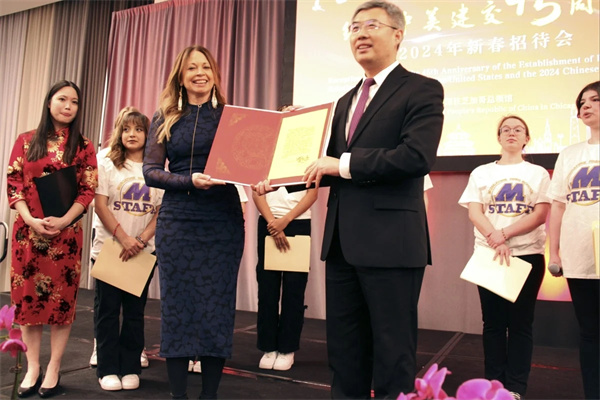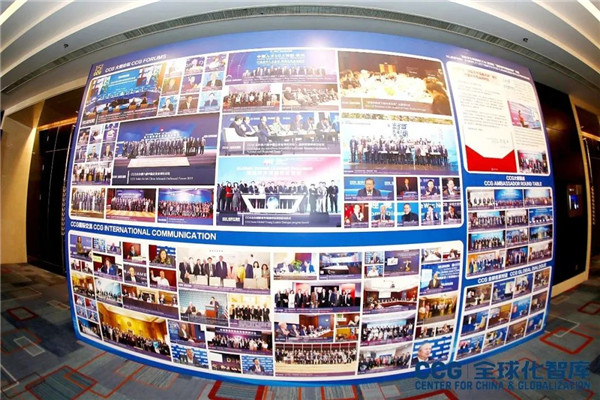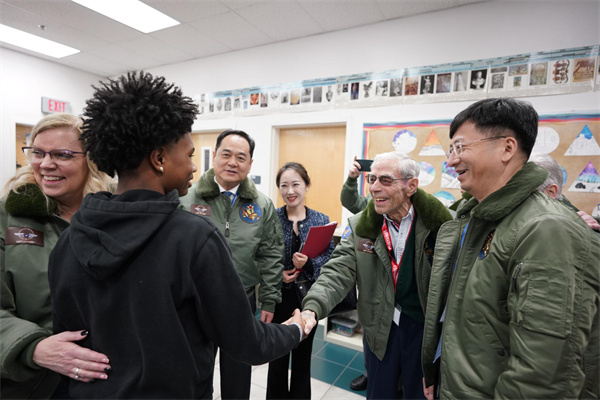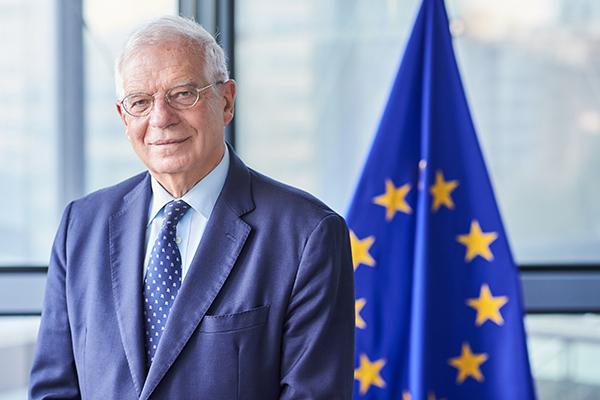Wang Huiyao: How restoring youth exchanges can build future bridges between China and US
March 06 , 2024From SCMP, 2024-3-6
■ Enrolment numbers of Americans in Chinese universities are historically low amid strained bilateral relations.
■ China should get creative with policies to attract students and young professionals from the US and around the world.

Chinese Consul General in Chicago Zhao Jian hands Muscatine High School Principal Jennifer Fridley a letter from Chinese President Xi Jinping to the students of the school, on February 27. Photo: Xinhua
By Wang Huiyao | Founder of the Center for China and Globalization(CCG)
In a significant diplomatic gesture during his visit to the Apec summit in San Francisco last year, President Xi Jinping announced that China would invite 50,000 young Americans to take part in exchange and study programmes over the next five years.
This commitment to mend the cultural rift with the US was highlighted by the warm reception students from Muscatine High School in Iowa received when they visited China in late January. They also received a personal letter from Xi.
Yet, such expressions of goodwill are not enough on their own. The number of American students enrolling in Chinese universities has dropped to its lowest level in a decade. According to a US government-funded study by the Institute of International Education, just 211 Americans studied in mainland of China during the 2021-22 academic year.
In 2023, US Ambassador to China Nicholas Burns estimated there were about 350 American students enrolled in study abroad programmes in China. The Covid-19 pandemic, strained bilateral relations and challenges such as the delayed resumption of direct flights have all played a part in this downturn.
It is imperative that the trend is reversed. The decline represents a lost opportunity for nearly a generation of young people to learn about China and potentially enhance the China-US relationship. Historically, students have been vital links, serving dual roles in public diplomacy as learners and influencers, fostering mutual understanding even when diplomatic and economic relations have soured.
If the US-China Science and Technology Agreement is renewed, it will offer a great opportunity for more young Americans to pursue their studies in China. However, there are several other initiatives that could also be implemented to further improve the situation. Exceptional programmes such as those at the Schwarzman College at Tsinghua University and at Yenching Academy, Peking University, could play an essential role.
 Foreign students learn about Chinese folk customs of the Festival of the Kitchen God, in Xian, Shaanxi province, on February 2. Photo: Xinhua
Foreign students learn about Chinese folk customs of the Festival of the Kitchen God, in Xian, Shaanxi province, on February 2. Photo: Xinhua
Showcasing the opportunities for educational and technological innovation through academic programmes could attract more international students and talent. Enhancing collaboration with US universities and exchange programmes like Duke Kunshan University and the Shanghai campus of New York University might attract more American students.
Policymakers should also consider streamlining visa processes and offering tax incentives for top-tier international educators. Such policies would make China more appealing for world-class scholars and enhance students’ educational experience.
It’s also essential to create engaging environments for students through work-study initiatives, career guidance and innovation competitions that nurture a supportive environment. International students should be integrated into global talent schemes that enhance their job prospects by establishing partnerships with human resources firms, embassies and bodies such as the International Labour Organization.
Cultivating partnerships with organisations like the All-China Youth Federation, the overseas Chinese federation, international chambers of commerce, the All-China Women’s Federation, and university alumni associations could help enrich these exchanges. By working with these groups, China can pave the way for a deeper and more nuanced understanding between young people in both countries.
Equally crucial is the development of a comprehensive public relations strategy aimed at fostering a welcoming environment. Sharing success stories and addressing potential concerns could help China shape a perception that not only reassures but ultimately attracts prospective international students and their families.
A pupil from Jack Lund Schofield Middle School in Las Vegas greets Flying Tigers veteran Harry Moyer on February 2 as Principal Terri Knepp (left), Yang Wanming (3rd left), president of the Chinese People’s Association for Friendship with Foreign Countries, and Chinese Consul General in San Francisco Zhang Jianmin (right) look on. Yang revealed an initiative to invite 100 students from Nevada to China on exchange and study programmes, and said his association would invite 20 students from Schofield school to China this year. Photo: Xinhua
Practical steps to maximise the impact of exchanges is also extremely important. That means promoting collaborative academic projects, supporting mixed living arrangements and creating communal spaces to spur cultural exchanges. These steps not only facilitate shared learning experiences, but also help break down cultural barriers and foster mutual understanding.
In terms of financial aid and scholarship opportunities, the US could consider reinstituting the Fulbright programme or creating similar ones while China could make scholarships more available and accessible for US students. Strengthening links between educational institutions, businesses, non-governmental organisations and think tanks in both countries is also crucial in diversifying exchange opportunities.
In the face of scepticism and misconceptions on both sides, China is working to provide an objective view of its complex identity. Especially in light of bilateral tensions, inviting more American students and young professionals to China is a critical step to enhance mutual exchanges and challenge global stereotypes.
This mission is especially significant considering the void left by scholars like Ezra Vogel and John Fairbank, whose work offered deep insights into China’s culture and society. There is an incredible opportunity for young American scholars to rediscover China, experience the country first-hand and share what they find, like the pioneering scholars before them.
From SCMP, 2024-3-6
Topical News See more







